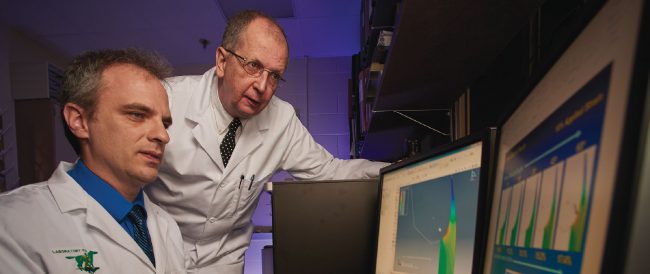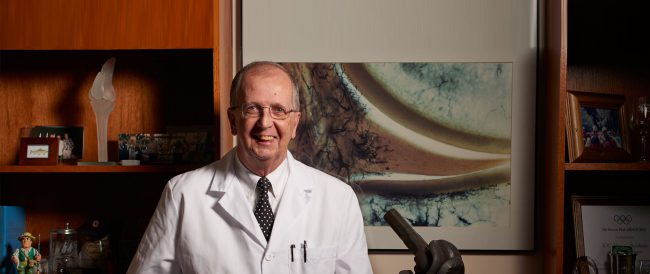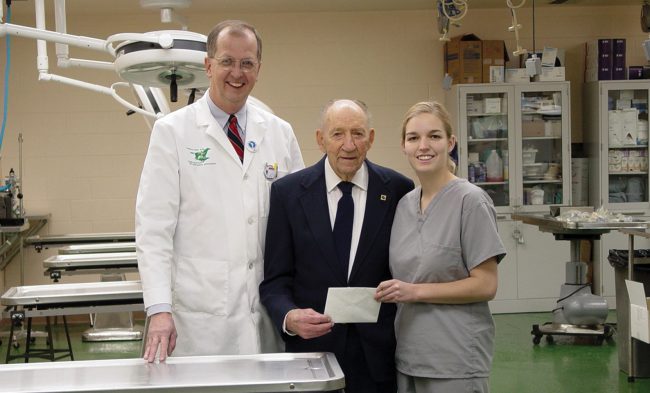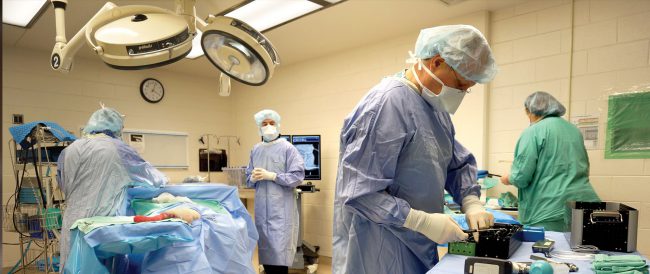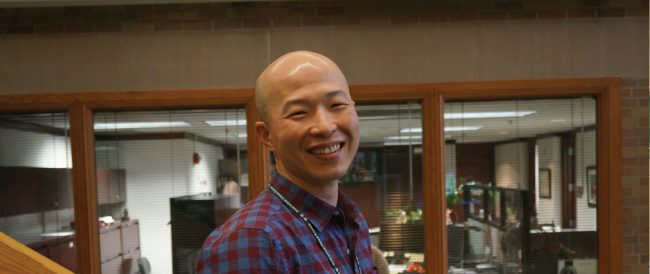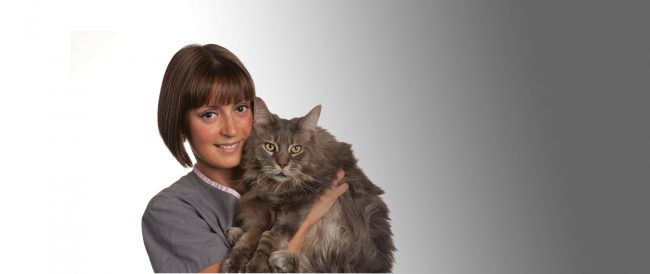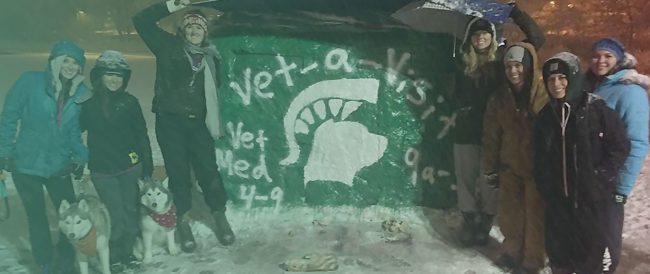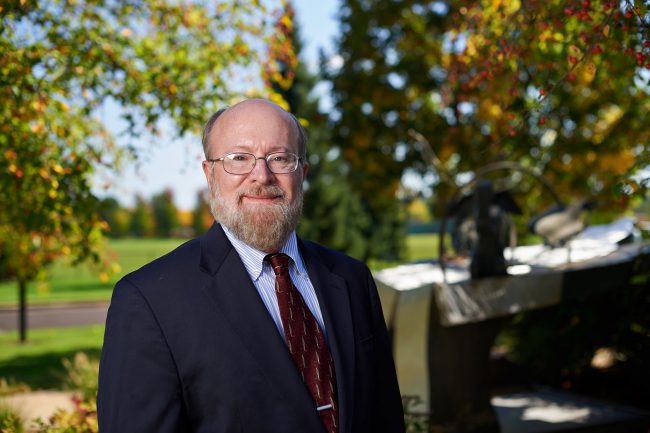 Read More
Read More
A longtime interest in surgery and a series of instrumental mentors are pieces of the path that brought Dr. Karen Perry to Michigan State University. Joining the veterinary college that was home to the author of her orthopedic textbook, Dr. Wade O. Brinker, was not part of a master plan. Now she is one of the surgeons being groomed to carry on his legacy.
Perry is a clinician researcher with a strong interest in teaching. In that, she is like Brinker. Her focus, however, is on cats. One of Perry’s most important goals is to advance the understanding and practice of feline orthopedics.
MSU has been an international leader in the formation of veterinary orthopedics’ fundamental principles. Brinker’s students and their students have made important contributions to canine orthopedics. The development of the specialty here and internationally has been focused on the canine and equine anatomy. Perry would like to see MSU take the lead in developing orthopedic principles with a feline focus.
“There is very little discussion about cats,” said Perry. “They are treated like small dogs, and that isn’t accurate. I’m trying to break that mold.”
A Space of Their Own
“There is very little discussion about cats. They are treated like small dogs, and that isn’t accurate. I’m trying to break that mold.”
The MSU Veterinary Medical Center has been making changes—to the research program and to the physical structure of the hospital—to build a stronger scientific understanding of cats and better serve feline patients.
“Cats have been ignored pretty much every step of the way,” Perry said. “They’re a bit of an enigma. To me, they are more complicated because they don’t declare their problems overtly and there’s just so much room for improvement in terms of diagnosis, treatment, and accommodating their care.”
The orthopedics team is establishing a feline friendly environment, including cat-specific wards and entrances. The team provides towels sprayed with the relaxing pheromone Feliway to patients and advises referring veterinarians to consider medications prior to the hospital appointment.
Perry’s ambitions at MSU are high, and she is determined to add to the Orthopedic Service’s legacy, just as her predecessors in canine-focused orthopedics have done.
“I’m incredibly honored to be a part of the team,” Perry said. “If I can contribute to veterinary medicine anywhere near as much as my esteemed colleagues have over the course of their careers, I’ll consider it a job well done.”
Researching a Different Species
Perry is currently conducting several research projects on feline orthopedics, in addition to general orthopedics.
“I am in the preliminary research stages of looking at different ways to assess mobility in cats, so that we can understand and act on their response to treatment more effectively.”
A recent paper by Perry looks at causes, diagnoses, and therapies for feline hip dysplasia. This is one of the many conditions that develop and present differently in dogs and cats. Degenerative changes happen earlier in dogs, and usually are marked by loose joints. Loose joints are not clearly associated with the disease in cats, degenerative changes tend to develop later, and symptoms are less marked.
Treating feline hip dysplasia early in its progression can prevent or delay effects like osteoporosis and can improve results of non-surgical treatment with a combination of environmental changes, physical therapy, drug therapy, or weight loss. If these changes do not adequately relieve the cat’s pain, there are two surgical options available: femoral head and neck excision and total hip replacement.
Collaborating and Advancing
Orthopedic Challenges Facing Cats
- Gait analysis and orthopedic examinations are more difficult to perform on cats.
- Cats exhibit different signs associated with pain and musculoskeletal disease than dogs, which is easily misinterpreted.
- There is a general lack of awareness in regard to specific feline orthopedic conditions and the associated clinical signs.
Perry first met Dr. Loïc Déjardin at a course on total knee replacement in dogs. Since that time, he challenged and inspired Perry, serving as a long-distance mentor. He is no longer challenging and inspiring her from afar.
“I wanted to work with Déjardin right from the word ‘go,’” Perry said. “MSU has always been at the forefront of advances that are being made in the musculoskeletal field. Our orthopedic heritage is impressive, so to be a part of that and to be able to contribute to their ongoing achievements is a great privilege.”
The feline focus Perry brings to the team extends from physical space to research. Another significant change for the hospital will be orthopedic continuing education courses designed for primary care veterinarians. She hopes to build a comprehensive program that teaches approaches that are possible without expensive equipment.
“Not every owner can afford a specialty service, but that shouldn’t mean they can’t have orthopedic care by their primary veterinarian.”


